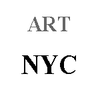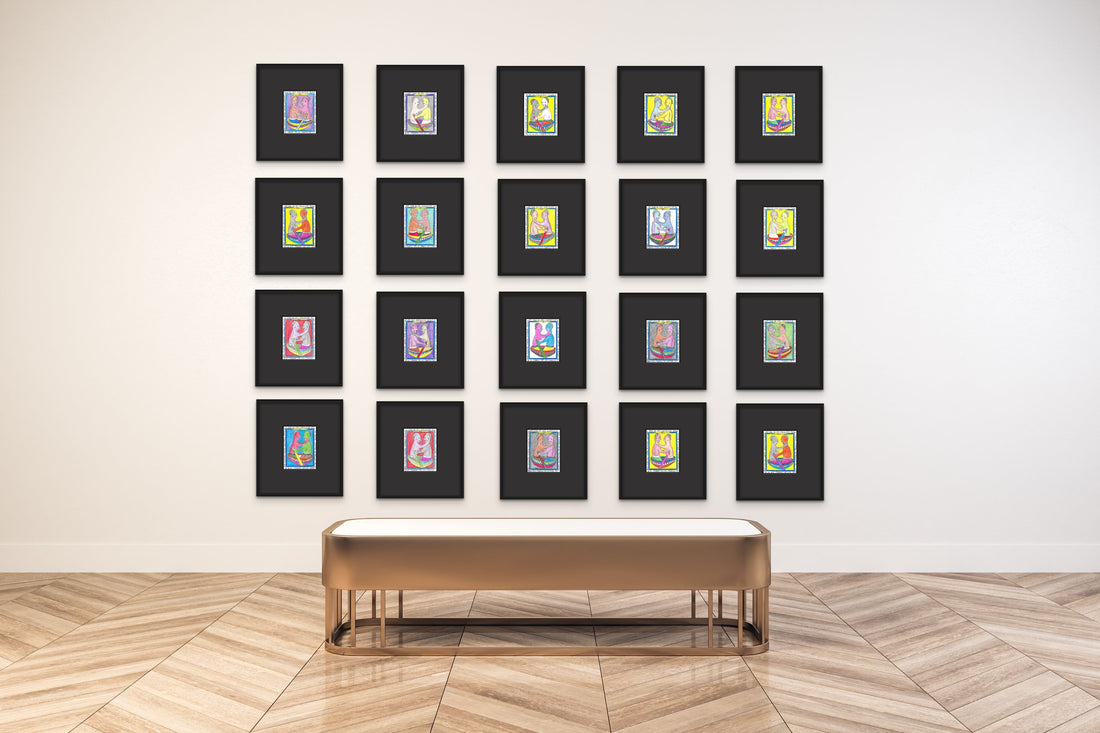A great artist
There was a historical moment when Samsung’s brand value surpassed Sony’s. In 2006, Chairman Samsung Lee Kun-hee’s achievements made history and could be said to be a turning point for the Korean industry. For Koreans, an artist from a country far away from the earth was with them when it was recorded as an unforgettable moment. He is Frederick Bruly Bouabré (1923–2014), dubbed King Sejong, who is the creator of Hangle, of the Ivory Coast. Samsung has set a grand goal of capturing the global mobile phone market by releasing Anycall. However, chairman Lee Kun-hee wanted to promote more luxurious and meaningful, not advertising featuring celebrities. So they produced a sculpture of Frederick bruly Bouabre’s “Rainbow Light Generous Hand” and installed it at more than 20 international airports. The advertisement for the statue, which holds his work ‘Rainbow Light Generous Hands,’ was a huge success. As a result, Anycall has been reborn as a luxurious and sophisticated image instead of the existing cheap image of Samsung. This artist collaboration is believed to be the starting point that profoundly impacted the current global Samsung brand value.

Frederick bruly Bouabre has participated in the 2nd Gwangju Biennale. At that time, he, known to Korea for the first time, would have caught the eyes of Chairman Lee Kun-hee, who was well-versed in the art. The artist’s work, which captures the lives of himself and the people around him as if he were drawing in writing and glimpses with ballpoint pens, colored pencils, and crayons on small paper, is attractive in itself, moving our hearts, but this is not the only reason why he is excellent. He wanted his citizens, who had difficulty reading and writing, to communicate smoothly through more accessible texts. At a time when French and indigenous languages had to be mixed and used in Côte d'Ivoire, a French colony, it is assumed that they had difficulty communicating and worried about cultural identity.
He created a language called the alphabet bete. Then, Bouabre invented pictographic characters and made the alphabet Bete(1990 — 91) to create the first writing system for Bete languages. Alphabet Bete is the most extensive series of Frederic Bruly Bouabre, consisting of 449 ballpoint pens and colored pencil paintings based on everyday bete life. Each image completed over the decades is very well combined with the monosyllabic Bete word. So his work is constantly being studied by linguists and cultural researchers.
Frederick Bruly Bouabre’s work experience can be seen as an exemplary example of an exhibition history left by a great artist. He once again impressed the mainstream art world with his recent intensive introduction at the Moma Museum in New York in 2022. Until he died in 2014, he did not neglect to show his work worldwide for decades, with the honorable world biennial, Tate Modern, Guggenheim, Dia Center, Pompidou Center, and Kasel Documenta. To properly evaluate the artist’s workability, experts from major art institutions and organizations must study and assess it. Some artists are in the spotlight apart of their quality in the art market, but artists who have not been properly verified will eventually lose their power. However, suppose the artist is well-verified but does not receive a proper price evaluation in the market. In that case, the artist can form a high price range in the market at any time with undervalued jewelry, and experts who move the market in the art world do not miss such an opportunity. In particular, at a time when African diaspora artists are attracting attention like these days, great writers such as Frederick Bruly Bouabre have a professional exhibition history with originality that matches the content of their unique work, which is incomparable to recent artists. Apart from the likes and dislikes of the art market, he is an artist who will remain in history for hundreds of years.
He left over thousands of drawings. In addition to the word card based on the alphabet Bete language, it expresses women’s human rights, democracy, harmony between countries, and the lives of families and surroundings.
His sons now keep essential records of his work and language studies. He had many children, and some of them are now older, and some of them are managing the work together. His children and family are proud of Frederick Bruly Bouabre more than anyone else and are still trying to publicize his achievements.


Born in 1923 in Zéprégühé, Ivory Coast / died in 2014 in Abidjan, Ivory Coast.
- 2022: Frédéric Bruly Bouabré: World Unbound, Museum of Modern Art, New York[3]
- 2013: Venice Biennale, Italy
- 2012: Inventing the world: the artist as citizen, Biennale Bénin, Cotonou, Bénin
- 2010–2011: Tate Modern, London, UK
- 2010: African Stories, Marrakech Art Fair, Marrakech
- 2007: Frédéric Bruly Bouabré, Ikon Gallery, Birmingham, UK
- 2007: Why Africa?, Pinacoteca Giovanni e Marella Agnelli, Turin, Italy
- 2006: 100% Africa, Guggenheim Museum, Bilbao, Spain
- 2005: Arts of Africa, Grimaldi Forum, Monaco, France
- 2004–2007: Africa Remix, the touring show started on 24 July 2004 at the Museum Kunst Palast in Düsseldorf (Germany), and travelled to the Hayward Gallery in London, the Centre Georges Pompidou in Paris and the Mori Art Museum in Tokyo.
- 2003: Frédéric Bruly Bouabré, Musée Champollion, Figeac, France
- 2002: Documenta 11, Kassel, Germany
- 2001–2002: The Short Century was an exhibition held in Munich, Berlin, Chicago and New York, organised by a team headed by Nigerian curator Okwui Enwezor
- 1996: Neue Kunst aus Africa, Haus der Kulturen der Welt, Berlin, Germania
- 1995: Galerie des Cinq Continents, Musée des arts d’Afrique et d'Océanie, Paris, France
- 1995: Dialogues de Paix, Palais des Nations, Geneve, Switzerland
- 1994: Rencontres Africaines, the touring exhibition was shown at the Institut du Monde Arabe in Paris, Cidade do Cabo in Sud Africa, Museum Africa in Johannesburg and in Lisbon, Portugal
- 1994: World Envisioned, together with Alighiero Boetti, the exhibition hwas shown in DIA Center for the Arts in New York and American Center, Paris, France
- 1993: Trésor de Voyage, Biennale di Venezia, Venice, Italy
- 1993: Azur, Fondation Cartier pour l'Art Contemporain in Jouy-en-Josas, France
- 1993: La Grande Vérité: les Astres Africains, Musée des Beaux-Arts in Nantes, France
- 1993: Grafolies, Biennale d’Abidjan in Abidjan, Ivory Coast
- 1992: A Visage Découvert, Fondation Cartier pour l'Art Contemporain in Jouy-en-Josas, France
- 1992: Oh Cet Echo!, Centre Culturel Suisse, Paris, France
- 1992: Out of Africa, Saatchi Collection, London
- 1992: L'Art dans la Cuisine, St. Gallen, Sweden
- 1992: Resistances, Watari-Um for Contemporary Art, Tokyo, Japan
- 1991: Africa Hoy/Africa Now, the touring exhibition has shown in Centro de Arte Moderno in Las Palmas de Gran Canaria (Spain), Gröninger Museum in Groningen (Netherlands), Centro de arte Contemporaneo, Mexico City
- 1989: Magiciens de la Terre, Centre Georges Pompidou and Grande halle de la Villette, Paris, France
- 1989: Waaah! Far African Art, Courtrai, Belgium
- 1986: L'Afrique e la Lettre, Centre Culturel Français, Lagos, Nigeria


